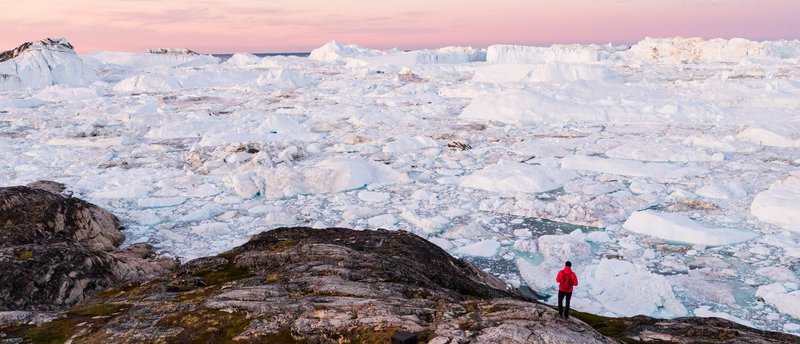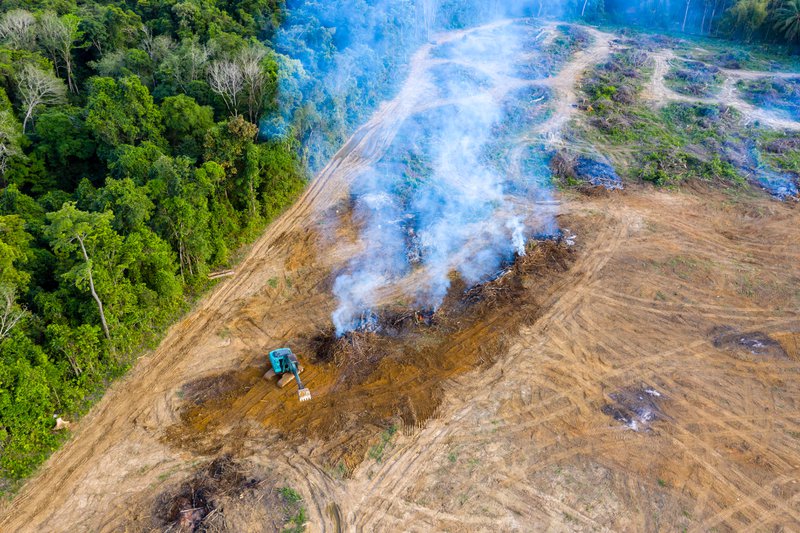Ever since watching Al Gores’ ‘An Inconvenient Truth’, I have watched in horror as numerous people have refused to accept the evidence; some of these, of course, highly influential. Don’t get me wrong, science should be driven by objective scepticism and constant questioning, but my fear has been that doubters are primarily driven by vested interest and an ulterior motive. We have now reached a position where the Intergovernmental Panel on Climate Change state, ‘Scientific evidence for warming of the climate system is unequivocal’.
But Climate Change is nothing new ?
Of course, the Earth’s climate has changed many times in the past – for example, seven cycles of glacial advance and retreat over the last 650,000 years. The current trend is particularly concerning. Climate Change is accelerating at an unprecedented rate. It is highly likely (with more than a 95% probability) to be the result of human activity over the last 50 to 100 years. This is in contrast to the causes of previous climate cycles. Previously, changes in the flux of solar radiation (as a result of variations in the sun/earth orbital distance) and high volcanic activity were the primary drivers. So, why has the human footprint been so destructive in relatively recent times?
Modern human intervention
The ‘Greenhouse Effect’ of Carbon Dioxide and other atmospheric constituents (such as water vapour) has been known for well over a hundred years; this shows that these gases effectively trap heat, preventing energy escape to space. This cannot be a coincidence. Evidence of unprecedented warming corresponds to a dramatic increase in the level of atmospheric carbon dioxide. The previous historic high was a level of around 300 parts per million; measurement now is in excess of 400 parts per million! Ice cores, for example drawn from Antarctica, show that the Earth’s climate has indeed been affected by the levels of greenhouse gases. The destruction in coral reefs, tree ring evidence and ocean sediments, all help us determine the irrefutable evidence of Climate Change.
Hidden in ice?
Glaciers and ice sheets form as successive layers of snow which accumulate over many thousands of years. A layer becomes compressed by those above, each layer having a distinct chemistry and texture defined by the prevailing climatic conditions at the time. For example, volcanic activity will lead to a deposit of volcanic ash trapped in the layer. By drilling down into an ice sheet or glacier we are effectively looking back in time as we move down from the surface layer. The deepest ice cores (from Antarctica) can look back around 800,00 years. Scientists can analyse the layers and the chemical/physical composition gives a ‘fingerprint’ of the climate conditions at the time of lay-down; for example, the concentration of carbon dioxide in the atmosphere. This gives us the peaks and troughs we see looking back over hundreds of thousands of years.
So, what is the evidence for accelerated climate change?
There is significant and compelling evidence for rapid climate change. Global rise in average temperature. The Earth’s average surface temperature has risen by 1.1 degrees celcius since the late 19th century. Further, the last several years have seen successive new monthly and average yearly temperature records, year on year.
There are dramatic changes in the coldest regions of the planet. Ice sheets in Antarctica and Greenland have shrunk significantly. Between 1993 and 2019, Greenland lost 279 billion tons of ice per year and Antarctic’s 148 billion tons per year. Not surprisingly, with the above statistics, glaciers are retreating almost everywhere in the world. Arctic sea ice has also declined, both in extent and thickness, over the last several decades. The amount of spring snow cover in the Northern Hemisphere has decreased over the past five decades, and melting of ice begins earlier each year.

Changes In The Oceans
There are also damaging changes occurring in the Oceans. The average temperature of the top 100m has risen by 0.4 degrees celcius since 1969. This may not seem like a large increase, but actually equates to a very large amount of excess energy. The Earth stores around 90% of the extra energy due to global warming in the Oceans. Sea level is also rising – about 20 cms (8 inches) in the last century. But the rate in the last 20 years is nearly double that previously and is accelerating every year. The acidity of the surface Ocean waters has increased by around 30% since the start of the industrial revolution; this is due to the absorption of the increased atmospheric carbon dioxide into the Ocean. All three changes are creating a threatening situation for animal and plant life.
Finally, the number and severity of extreme weather events is increasing globally. Increasingly heavy rainfall causing excessive flooding, and strong winds are being experienced in previously very temperate climates.
Evidence that our climate is changing at a rate never before experienced is convincing; and with high probability, caused by human activity. So, are there solutions?
Can we avert unpredictable changes to the way we live?
Solutions fall into two categories – mitigation and adaptation.
The 2014 report on Mitigation of Climate Change (United Nations Intergovernmental Panel on Climate Change), stated that ‘the goal of mitigation is to avoid significant human interference with the climate system and stabilise greenhouse gas levels in a timeframe sufficient to allow ecosystems to adapt naturally to climate change, ensure that food production is not threatened and to enable economic development to proceed in a sustainable manner’. Mitigation requires a reduction in the flow of greenhouse gases into the atmosphere. This can be achieved by either reducing emissions at source, for example, replacing fossil fuels by renewables for electricity generation, or by increasing the efficacy of the ‘sinks’ for carbon dioxide – forests, oceans and soil. We should ideally adopt both.
Adaptation requires that we adjust behaviours and processes to the changing climate. Human civilisations have had to adapt to climate changes in the past with differing degrees of success. The difference for us is the rapid change in climate over the last decade, compared to a relatively stable climate for the past 12,000 years. Although climate change is global, adaptation must be more local. Communities must react differently dependent on the local consequence – encroaching sea levels, expanding desert areas or extreme weather as examples.
Where are we heading?
I started this article with a reference to Al Gores’ An Inconvenient Truth, first released in 2006. Although there had been ‘climate activists’ well before this, it is fair to say that the film reached a very large audience and triggered a more concerned debate. So, what has the last 14 years brought?
There has been action. Renewables are now a significant (if not largest) contributor to electricity generation in many Countries; electric cars have gone from being almost a technological novelty to a major growth industry and with some Governments committing to remove oil based fuels in a given time frame. There is a drive for much cleaner public transportation and for more use of it. The UK Government’s financial incentives in the shape of a Green Grant, you can read more about how you apply here, will certainly help.
Education is also now well and truly adopting climate change as part of its curriculum, children as young as 6 are being taught about climate change and what they are their parents can do to help do their bit.
The Rate Of Change
However, the data does not lie! The rate of change is accelerating in many criteria and I simply cannot get the massive 279 billion tons per year ice loss, from Greenland alone, out of my head!! We are going backwards in protecting forests and our soil is changing due to ever increasing demands for food productivity; both are important sinks for carbon. Changes to the sea are threatening habitats and the continued existence of certain plant and animal species.
I reflect on how little, in reality, I have done personally over the last 14 years! Sure, some solar panels and being more energy economic help – but, excuse the pun, all a drop in the Ocean. So, this conclusion is not a ‘preach’ by any means. I start with the individual, as Sir David Attenborough reinforced very recently that we can all play a part – many small steps can add to a big effort. Each of us making changes to what we do and how we do them.

Climate Change Conclusion
However, I feel that Governments must have the biggest impact. We must have unified action – it needs a World Government approach. And there has to be haste – policies for 2050 may be too late; 2030 may be too late!! The joint learning for Covid-19 should be applied to the climate situation. For example, all developed Countries should drive to support the development of fusion power generation for all. We should have a global policy for food generation that takes advantage of climate change in extended growing seasons, but does not deplete the soils capacity as a carbon sink. I feel the data tells us (and has told us for years) that this situation requires radical thinking. I feel that we are still thinking in linear terms, and that an even more radical approach is needed.
The Climate Change Conference due to take place in Glasgow in November this year has now been postponed due to Covid-19 until November 1st to the 12th in Glasgow, Scotland. You can read the UN update here.





